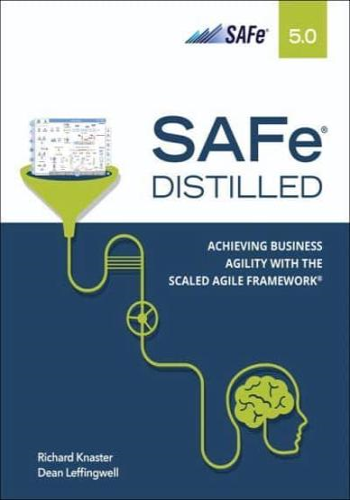Chapter 1: SAFe Essentials
* Defines SAFe (Scaled Agile Framework) as a comprehensive set of practices and principles for scaling Agile across multiple teams and programs.
* Outlines the four key pillars of SAFe: Continuous Delivery Pipeline, Team and Technical Agility, Architectural Runway, and Lean Portfolio Management.
* Example: A software development team using SAFe to coordinate their release cycles and ensure smooth integration.
Chapter 2: The Scaled Agile Framework (SAFe) Model
* Describes the hierarchical structure of SAFe, from Teams through Value Streams to Large Solutions.
* Explains the concept of a Program Increment (PI) as a fixed-length planning and execution cycle.
* Example: A large organization using SAFe to manage multiple teams working on different projects and products.
Chapter 3: Team and Technical Agility
* Emphasizes the importance of self-organizing, cross-functional teams and technical practices that support agility.
* Introduces Kanban, Scrum, and XP as core Agile methodologies integrated into SAFe.
* Example: A software development team using Kanban to manage their backlog and track progress.
Chapter 4: Continuous Delivery Pipeline
* Outlines the Continuous Delivery (CD) Pipeline as the backbone of SAFe, enabling frequent and reliable software releases.
* Explains the stages of the CD Pipeline and the tools used to support it, such as CI/CD tools and automated testing.
* Example: A software company using the CD Pipeline to deploy new features to production multiple times per day.
Chapter 5: Architectural Runway
* Describes the Architectural Runway as a long-term plan that guides technical decisions and ensures architectural stability.
* Introduces architectural principles, such as modularity, loose coupling, and service-oriented architecture (SOA).
* Example: A team of architects using the Architectural Runway to plan the future technical roadmap for a complex software system.
Chapter 6: Lean Portfolio Management
* Introduces Lean Portfolio Management (LPM) as the process of managing a portfolio of projects and programs based on Lean principles.
* Outlines the key activities of LPM, such as portfolio prioritization, investment planning, and risk management.
* Example: A company's product management team using LPM to prioritize and fund new product initiatives.
Chapter 7: Implementation
* Provides guidance on implementing SAFe within an organization, including adopting a Lean-Agile mindset and establishing a change management plan.
* Discusses the role of SAFe Program Consultants (SPCs) in supporting implementation.
* Example: A company hiring an SPC to guide their implementation of SAFe and train staff on Agile practices.
Chapter 8: Scaling Agile in Practice
* Shares case studies and lessons learned from organizations that have successfully scaled Agile using SAFe.
* Discusses the challenges and benefits of implementing SAFe, and provides tips for overcoming obstacles.
* Example: A large healthcare provider implementing SAFe to improve collaboration and deliver software solutions faster.







